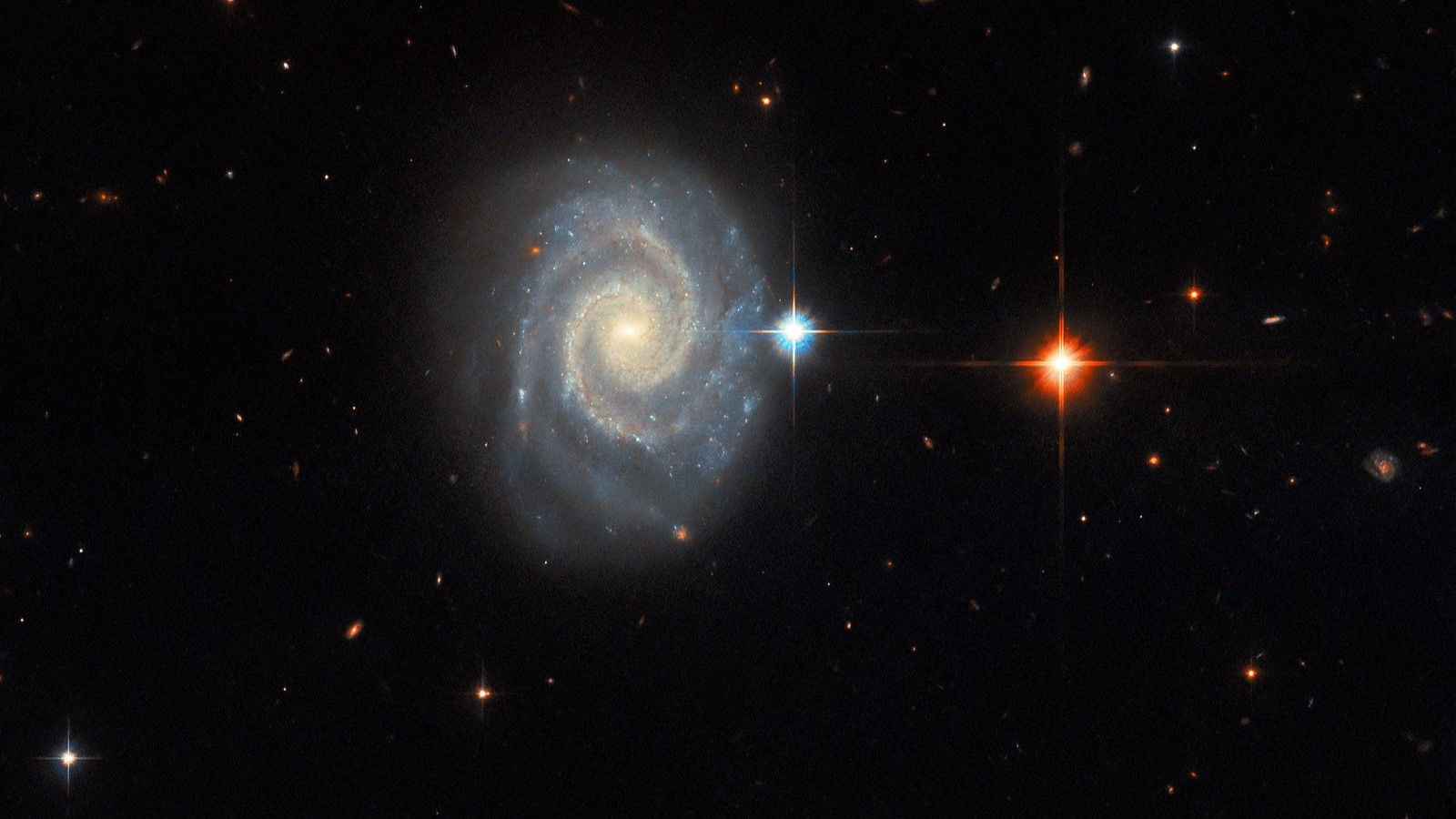Hubble Telescope captures a galaxy's 'forbidden' light in stunning new image
This galaxy appears to contradict some of the most common rules of quantum physics.

The "forbidden" light of a distant spiral galaxy shines brightly in a new image from the Hubble Space Telescope.
Located about 275 million light-years from Earth, the galaxy, called MCG-01-24-014, has two prominent, well-defined spiral arms and an energetic glowing core known as an active galactic nucleus (AGN). The galaxy is seen face-on with its arms creating a nearly perfect circular shape.
MCG-01-24-014 is classified as a Type-2 Seyfert galaxy, which is one of the two largest groups of active galaxies scientists know of, along with quasars. Seyfert galaxies exhibit a characteristic bright core, but are less detectable when compared to quasars — whose incredibly luminous AGNs can outshine the entire host galaxies within which they reside, according to a statement from the European Space Agency (ESA).
Related: The best Hubble Space Telescope images of all time!
Seyfert galaxies can also be further categorized based on the intensity of light being emitted from their active cores. Depending on the wavelengths of light, or spectra, Seyfert galaxies are classified as either Type-1 or Type-2. The latter emit spectral lines associated with so-called "forbidden" emissions, given they should not exist according to certain rules of quantum physics.
"To understand why emitted light from a galaxy could be considered forbidden, it helps to understand why spectra exist in the first place," ESA officials said in the statement. "Spectra look the way they do because certain atoms and molecules will absorb and emit light very reliably at very specific wavelengths."
Electrons — the tiny particles that orbit the nuclei of atoms — lose or gain specific amounts of energy, which correspond to certain light wavelengths being absorbed or emitted. However, certain spectral emission lines are considered to be "forbidden" because they are observed in space but do not occur under normal conditions on Earth.
Get the Space.com Newsletter
Breaking space news, the latest updates on rocket launches, skywatching events and more!
"Quantum physics is complex, and some of the rules used to predict it use assumptions that suit laboratory conditions here on Earth," ESA officials said in the statement. "Under those rules, this emission is 'forbidden' — so improbable that it’s disregarded. But in space, in the midst of an incredibly energetic galactic core, those assumptions don’t hold anymore, and the ‘forbidden’ light gets a chance to shine out towards us."
Indeed, the bright light from MCG-01-24-014 shines radiantly in the new Hubble photo, which was taken using the telescope's Advanced Camera for Surveys (ACS). The spiral galaxy appears in the center of the image, with two large bright stars in the foreground, one blue and one red, positioned directly above the galaxy itself. Several more distant galaxies are scattered across the otherwise pitch black backdrop of space. ESA released the new Hubble photo online on Dec. 18.
Join our Space Forums to keep talking space on the latest missions, night sky and more! And if you have a news tip, correction or comment, let us know at: community@space.com.

Samantha Mathewson joined Space.com as an intern in the summer of 2016. She received a B.A. in Journalism and Environmental Science at the University of New Haven, in Connecticut. Previously, her work has been published in Nature World News. When not writing or reading about science, Samantha enjoys traveling to new places and taking photos! You can follow her on Twitter @Sam_Ashley13.









